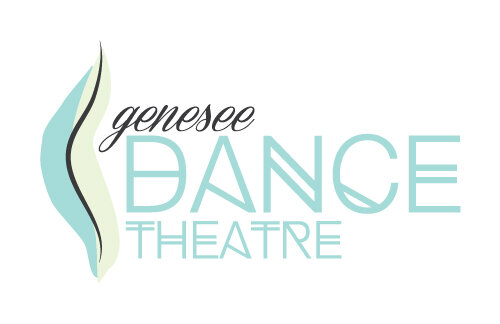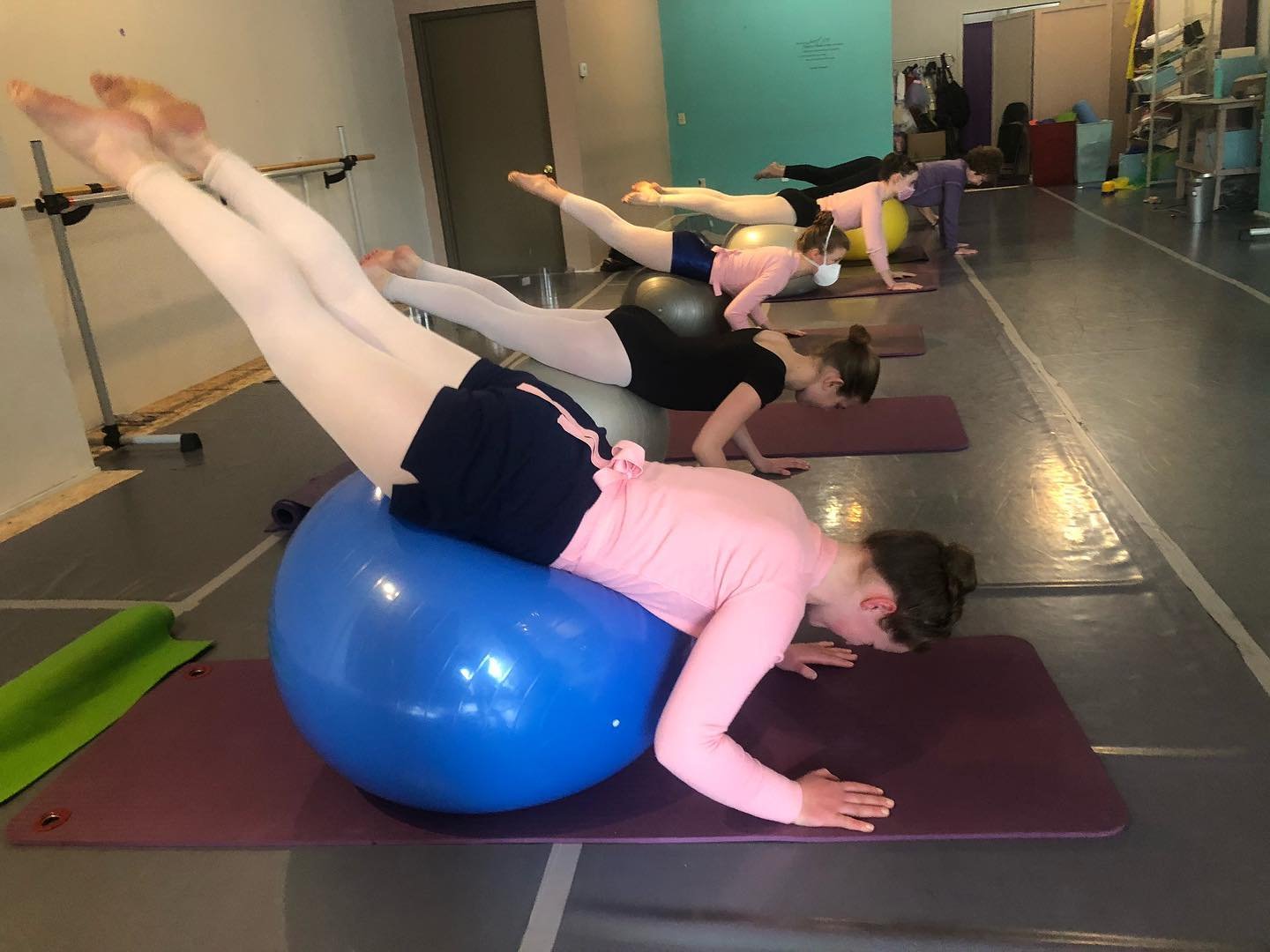Pilates vs. PBT for dancers: which is better?
Dance is a physical art form. Like with any athletic endeavor, you’ll only see improvement if you’re consistent.
This doesn’t mean you have to convert your garage into a dance studio complete with barres, mirrors and a marley floor. You can maintain and accelerate your progress with just a few minutes each day and minimal equipment!
Pilates and PBT are two popular dance conditioning methods you can practice at home. Both claim to make dancers stronger, more flexible and less prone to injury — but do they really?
Here’s my two cents on these low-impact approaches to conditioning based on my years of experience as a dancer, certified ballet teacher and Progressing Ballet Technique instructor.
Progressing Ballet Technique is a popular condititioning method for dancers developed by Marie Walton-Mahon.
What is Progressing Ballet Technique (PBT)?
PBT is an “innovative body conditioning and strengthening program” designed to enhance muscle memory needed for ballet and contemporary dance. At Genesee Dance, I incorporate PBT into both my group fitness classes and my ballet classes for levels 3 and older.
I love the progressive levels and that each exercise is set to music to encourage dancer musicality. It’s low impact and can be done at home with videos on the PBT website. If you want to try it out, here’s a referral link that gives you 50% off your membership for life!
One potential drawback to PBT is that you do need a variety of props to experience the full PBT program. The good news is the props are inexpensive and easy to find at any sports equipment store or on Amazon. At minimum, you will need one larger fit ball and one soft Pilates ball.
Prop Recommendations for PBT
Fit Ball - The fit ball —a.k.a. stability ball or yoga ball —is the most used prop in PBT. Use this guide to determine the size ball you need.
Pilates Ball - PBT calls this smaller 9-inch diameter prop a “fusion ball.” I purchased a pack of these pilates balls years ago and it’s one of the best purchases I made for the studio! They’re inexpensive and still going strong after 6+ years of almost daily use. Pilates balls also double as a fun prop for our toddler and preschool classes.
Resistance Bands - To get the most out of PBT, you’ll need at least one 10 foot long resistance band. Note that these are MUCH longer than the typical bands used in exercise classes or for physical therapy.
A dancer demonstrates a PBT exercise with a resistance band.
For full disclosure, I almost never teach the exercises with the resistance bands because of the time it takes to help dancers get “wrapped up”. The exercises are awesome and offer many benefits, but you won’t be totally missing out if you don’t invest in a band. PBT is such a comprehensive program with a vast library of exercises that you’ll never run out of things to work on with just the two balls!
PBT also has a few exercises using Bosu balls. Those are essentially a half of a fit ball with a flat side. The Bosu is excellent for training balance but a little more on the pricey side and not strictly necessary for the program.
Mat Pilates for Dancers
Our studio is also home to a full time Pilates program, so it’s no surprise I recommend it to my dancers! Many of my students take a weekly Pilates class, which I infuse with PBT and flexibility work.
Pilates is an exercise method created and codified by Joseph Pilates, a German-born fitness trainer who brought his method to New York City in the mid 20th century. The exercises include a focus on spinal mobility and balanced strength. Unlike traditional gym exercises that “spot train” single muscle groups, Pilates trains the body to work as a unified, balanced whole.
Dancers soon discovered the method improved their performance on stage, reduced their risk of injury, and helped them recover from existing injuries more effectively. The Pilates method continues to be the go-to conditioning method for many dancers with more and more research suggesting its benefits are long lasting.
I fell in love with Pilates at my first summer intensive program as an 11 year-old. I loved the challenge, the flow and how it made my body feel ready for a full day of dancing. Soon after returning home, I picked up Brooke Siler’s book, The Pilates Body, so I could keep practicing on my own.
I never stopped!
How often should dancers do Pilates?
For most young dancers, I suggest practicing mat Pilates twice per week. I suggest taking one class at the studio and setting aside 20 - 30 minutes another day to practice at home. All you need is a mat, a list of exercises (or videos to follow), and some optional small props.
If possible, it’s well worth the investment to learn Pilates under the guidance of a trained instructor. Even if you can’t attend class regularly, a teacher can give you feedback, personalized cues and tips for making the most of your practice.
Pilates Vs. PBT — What’s the Difference?
To the untrained eye, Pilates and PBT look similar. Maybe even identical! While they share a lot of similarities and potential benefits, PBT and mat Pilates are not interchangeable.
Let’s break it down.
PBT is specifically designed to improve dance performance. Most exercises in the program mimic ballet patterns, training you on the correct way to execute movements for standard ballet technique. While PBT has a fundamental emphasis on alignment and healthy movement, it is not necessarily true cross training because your muscles will be working the same way they do in dance class (not for every exercise, but for many).
Mat Pilates is designed to improve overall health and fitness rather than dance specifically. There’s no aesthetic component to Pilates exercises — despite what you see on Instagram! A well balanced Pilates class will also have you moving in ways that “counter” traditional ballet patterns, like working internal rotation, spinal flexion (rounded back) and flexed feet. It’s more in line with what I consider cross training from an athletic perspective.
Mat Pilates is not choreographed to music. You flow from one exercise to another. PBT on the other hand breaks exercises down one-by-one and sets them to music. A teacher explains the exercise, then students perform it to specific counts, like in a dance class.
PBT is a trademarked program with a set curriculum. It’s only taught by teachers certified through the program itself, and via their official video library. That means there’s relative consistency in what you get across classes, as all teachers receive the same training and resources.
Pilates is a generic term. There are dozens, if not hundreds, of training programs calling themselves “Pilates”. While there are standard exercises taught across most reputable programs, you could end up getting wildly different experiences depending on who you learn from.
Genesee Dance Theatre students practice a variation of the “Dolphin” exercise in a combined PBT/Pilates fusion class.
So which one is better?
I believe there’s value in both Pilates and Progressing Ballet Technique for dancers. Which one is “better” for you depends on your goals and your preferences!
For dancers on holiday breaks, or who can’t take at least 4 -5 ballet classes each week, PBT is the ideal home training program. Practiced at least twice per week for 30 - 45 minutes, PBT has the potential to dramatically improve your ballet performance. In my anecdotal experience, it’s particularly good at helping you identify and fix bad technique habits and alignment problems.
On the other hand, dancers who are already training multiple hours per day 6 days a week, might benefit from less PBT and more Pilates. Pilates gives you the chance to take a break from “ballet brain”. You don’t need to think about musicality or aesthetics, and it might be less tempting to push your body past its point of pain tolerance.
For most dancers, both Pilates and PBT can be integrated into a healthy training program. If you want to dive deep into one or the other, ask your teacher what they suggest for you, or give them both a try.
In the end, the best conditioning method for dance is one you enjoy! You’re more likely to stay consistent when you look forward to your workouts.
And every dancer knows —consistency is the key to progress.




